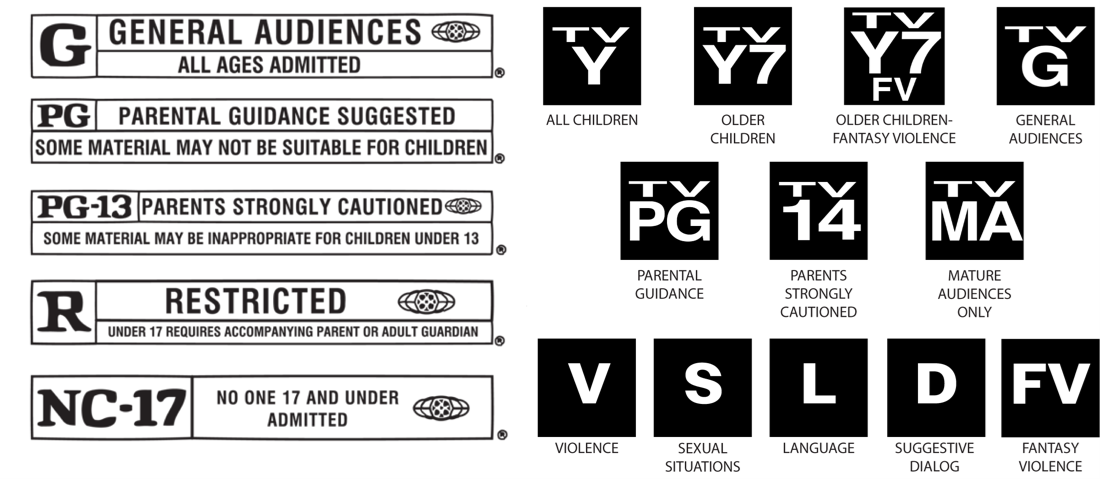How Cross-Platform Release Windows Impact Localization & Local Age Ratings
In early 2020, the COVID pandemic forced studios to rethink how and when to release major motion pictures. The pandemic cut available theaters and release times by more than half, and the industry and revenues worldwide suffered significantly. With the public no longer able to watch films in person, a new strategy for releasing theatrical films was necessary, and the "Cross-Platform Release" strategy was born.
The concept is straightforward: release premium first-run titles in as many theaters as possible (if at all), then soon after on Transactional Video-on-Demand (TVOD), where consumers could buy or rent it. If a title was underperforming in certain markets, it could be released on Premium Video-on-Demand (PVOD) to help bolster awareness and revenue. Then, based on consumer response, release it on SVOD. Previously, a first-run film could be released domestically in over 4,300 theaters and run for months before it went to TVOD or SVOD.
Necessity is the Mother of Invention
A perfect example of this strategy is the Disney/Pixar animated film "Onward." The film opened the weekend of 6 March 2020, in 4,310 theaters to $39.1M in revenue. Thirteen days later, it was still in 4,310 theaters, but COVID reduced daily audiences, and revenues fell to $33,296. With a budget of $175M, making $61.5M worldwide at a time when theaters were closing wasn't going to cut it. Pulled from theaters on 19 March 2020, the film was released on TVOD the next day. It was released to SVOD two weeks later. Using a combination of TVOD and SVOD, "Onward" went on to gross $142M worldwide when projections were it should have done much more.
Fast forward to today when people are back in theaters ("Barbie," anyone?), and theatrical releases compete with big-budget, first-run streaming titles. Among the lessons learned from the pandemic were studios recognized some consumers prefer watching movies at home to physically going to theaters. Consumers, especially families, were willing to wait weeks to avoid crowds and risk their health.
The cross-platform release strategy allowed studios to use traditional distribution to release titles, meet consumers where they were, and extend the revenue life of films before they went to SVOD. The current movie "Meg 2: The Trench," which, despite grossing $353M worldwide since its 4 August release, grossed just $74M in the U.S., prompting Warner Brothers to release it to TVOD 20 days later. The film was the "Top 10” TVOD title for the week ending 27 August.
It's the Same, Only Different
There has always been a form of the “cross-platform release strategy,” but not like today. In the “old days” of the 1980s through the late 2010s, a movie was released in the theater and then went to videotape or, later, DVD where it could be bought or rented. Streaming made wide distribution possible, and COVID accelerated consumer dependence on streaming because they had nowhere else to go for entertainment. Consumer behavior changed permanently as a result. While economics remains the critical factor, content creators and distributors that depend on international distribution to extend the financial life of their work make ensuring it is ready for global audiences imperative.
Streaming and Regulation Complicates Localization and Distribution
There is a lot to consider when preparing titles for cross-platform release. Not only is language translation a critical component of the process, but costs related to subtitling and audio dubbing, regulatory compliance and any required edits, multi-lingual marketing, and distribution can vary significantly across platforms.
For example, a title released theatrically likely has different age rating criteria than one heading for linear or streaming distribution in the same country. Those differences can impact age ratings, watershed, and even the types of platforms or channels where it can be released. The refusal to edit or change a film’s offensive language or action to earn a lower TV age rating could force it into late evening airtime, significantly reducing audience size and advertising revenue.
Navigating these obstacles requires expertise not typically available to everyone who owns or licenses content for non-native language markets. Here are some suggestions for making the process go more smoothly.
First Things First
The first step in solving a problem is understanding it. Last year, we discussed the five key steps to preparing a global release title. In that post, we share the hows and whys for thinking about international releases early in the production process, learning as much as possible about your audience, and not being afraid to ask for help. These tips are as relevant today as they were a year ago.
Failing to Plan is Planning to Fail
The time required to prepare an original film or TV series for international release is substantial. While localization is the most time-consuming part of the process and can take months, other overlooked components exist. There can be fundamental differences between literal script translation and addressing cultural issues that will impact ratings. For example, how drugs are used or represented matters to audiences, and regulators in dozens of countries worldwide can be stringent in ensuring the audience doesn’t see something they shouldn’t. Failure to know those differences and plan accordingly is sure to impact its age rating, its audience, and your revenue.
Think Locally, Plan Regionally
Spherex is helping creators streamline the global distribution process by identifying cultural events within titles that are problematic for audiences and regulators. One of the things we’ve found is that while localization is “local,” there are regions where similar sensibilities exist. If you consider where films are being censored or banned for specific types of content, you’ll note many countries have similar cultures, religions, forms of government, and regulations. Using the Spherex AI platform, you can identify similar markets; and instead of creating separate versions for individual countries, you may be able to prepare a single release and distribute it regionally. This strategy expands your content’s markets and further monetizes it, reducing post-production localization and distribution expenses.
Cross-platform releases are here to stay. It results from the COVID-19 pandemic, such as the broader adoption of streaming as an entertainment source and a significant change in consumer behavior. After a title has run its theatrical course, there are plenty of opportunities to reach even larger audiences using this strategy. Spherex is the only AI platform with years of experience providing the intelligence and guidance creators and studios need to ensure their content reaches the largest audience with the lowest brand risk. The secret is knowing and planning. Click here to learn more about how Spherex can help your titles succeed.
Related Posts


SILICON VALLEY
2336-H Walsh Ave.
Santa Clara, CA 95051
+1(408) 550-2344
LOS ANGELES
3900 W Alameda Ave.
Burbank, CA 91505
+1(310) 496-7307









